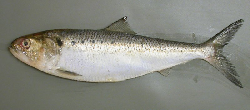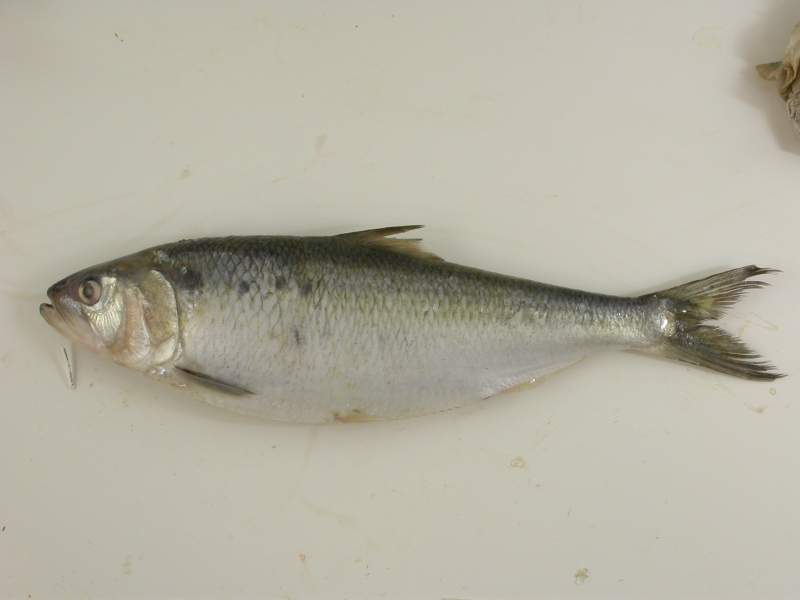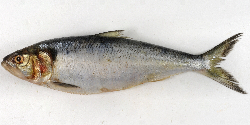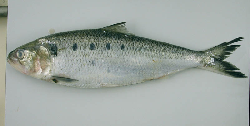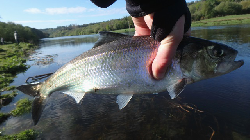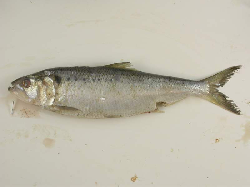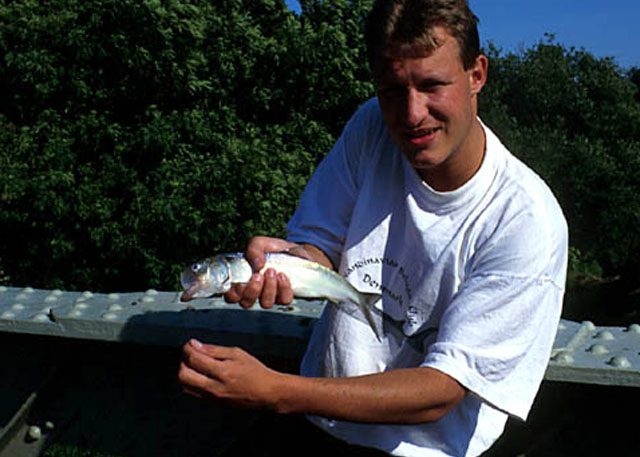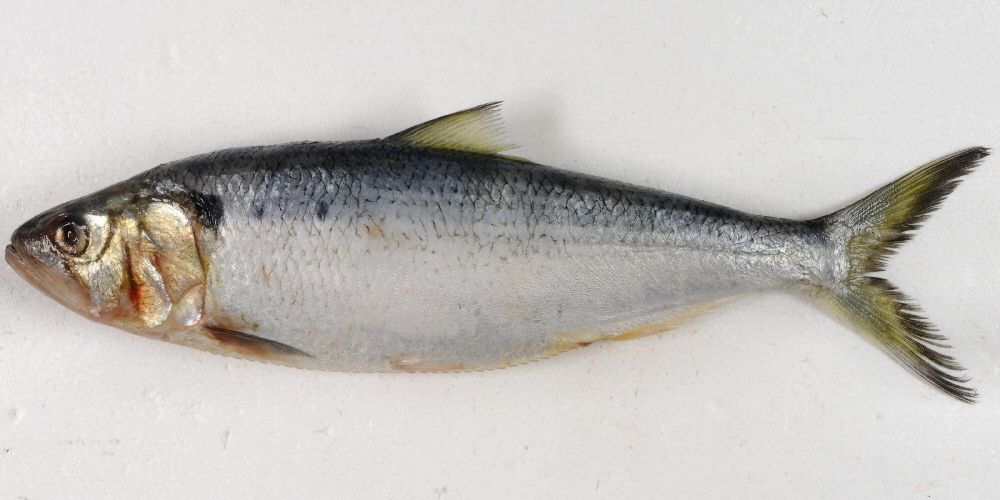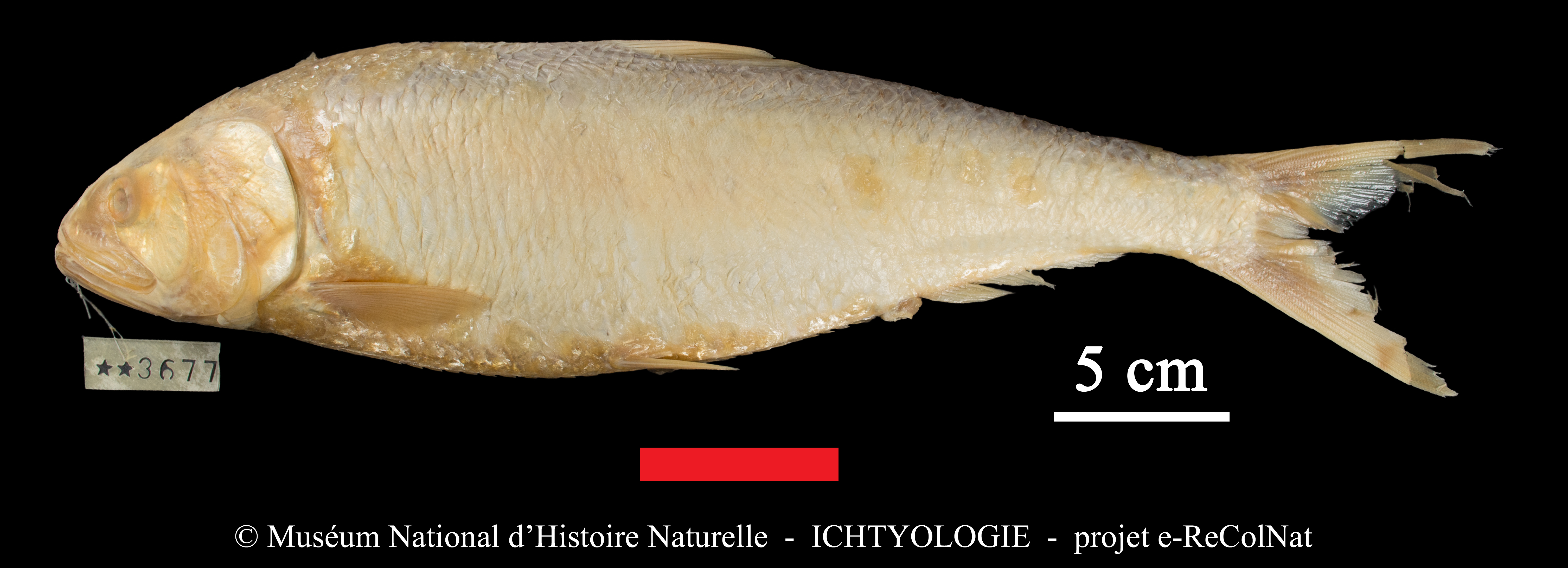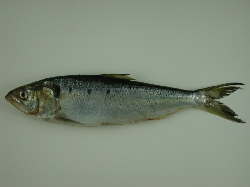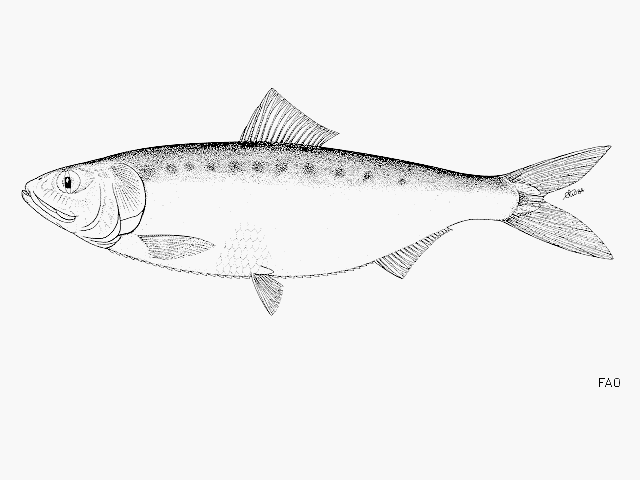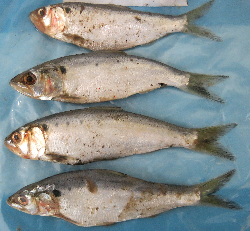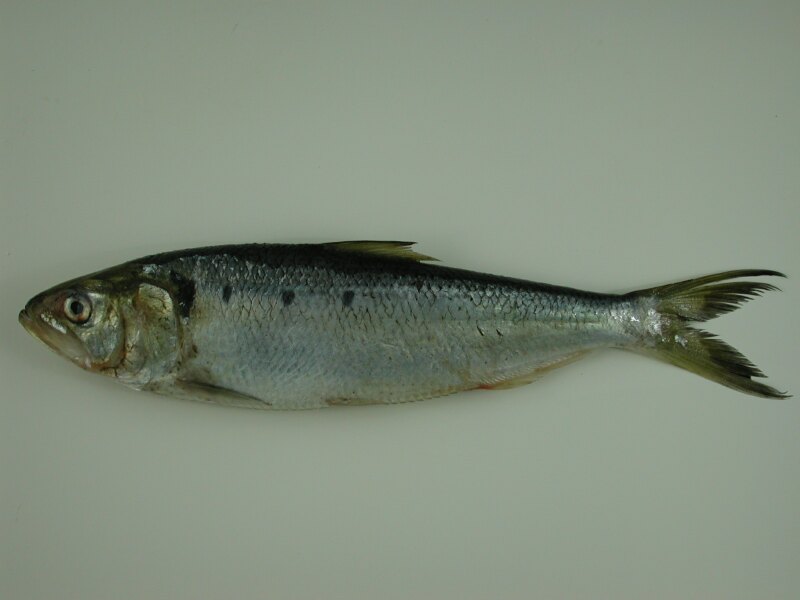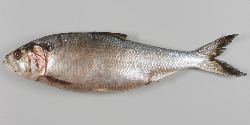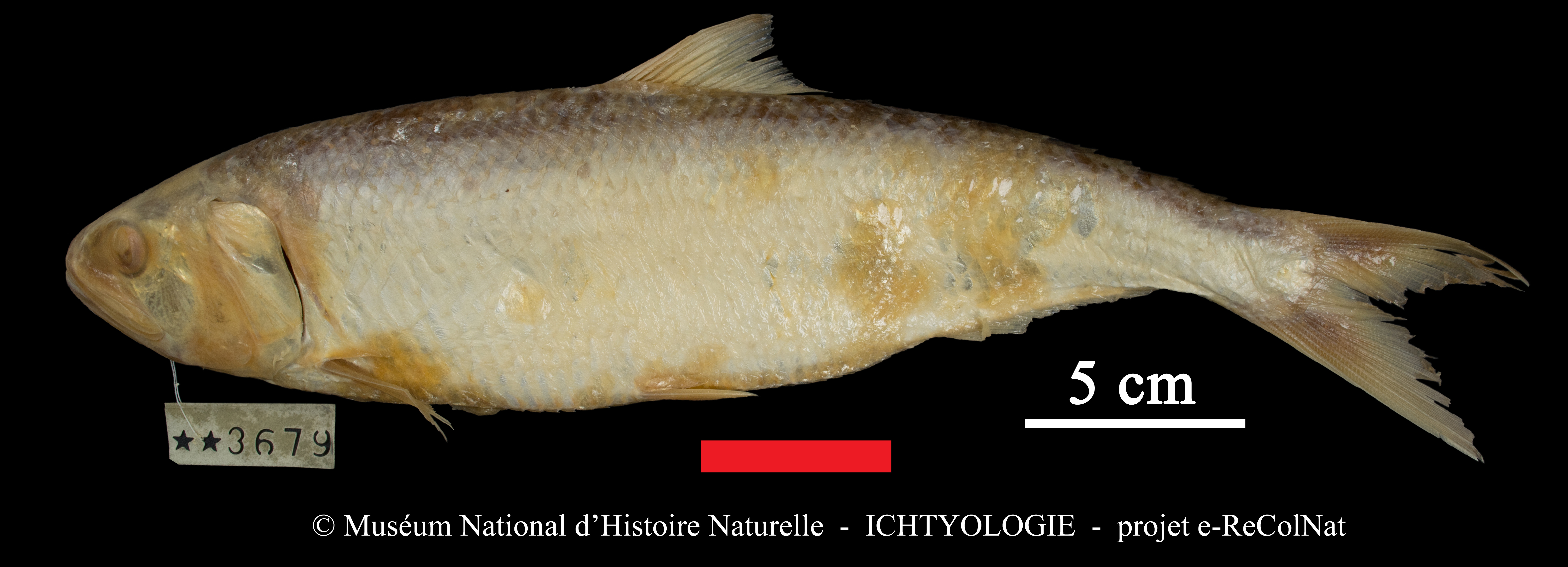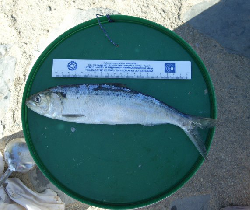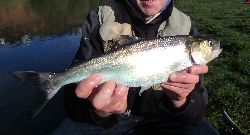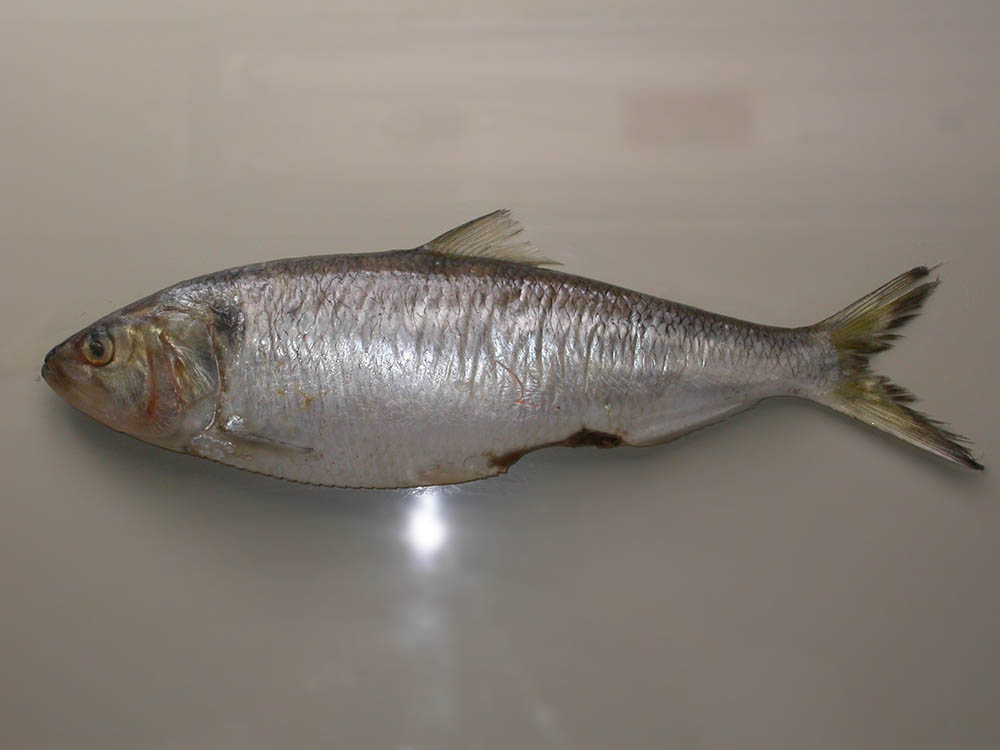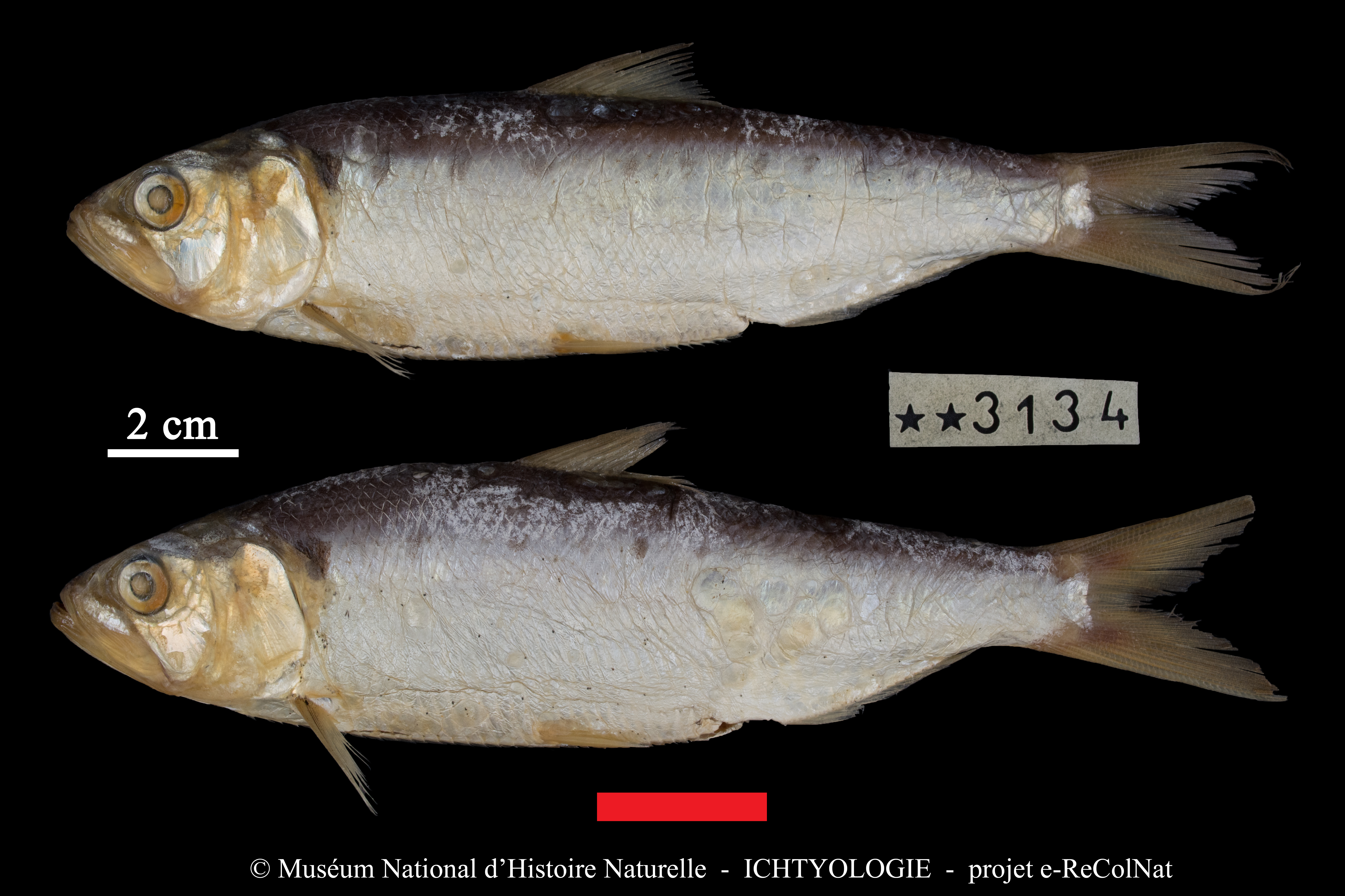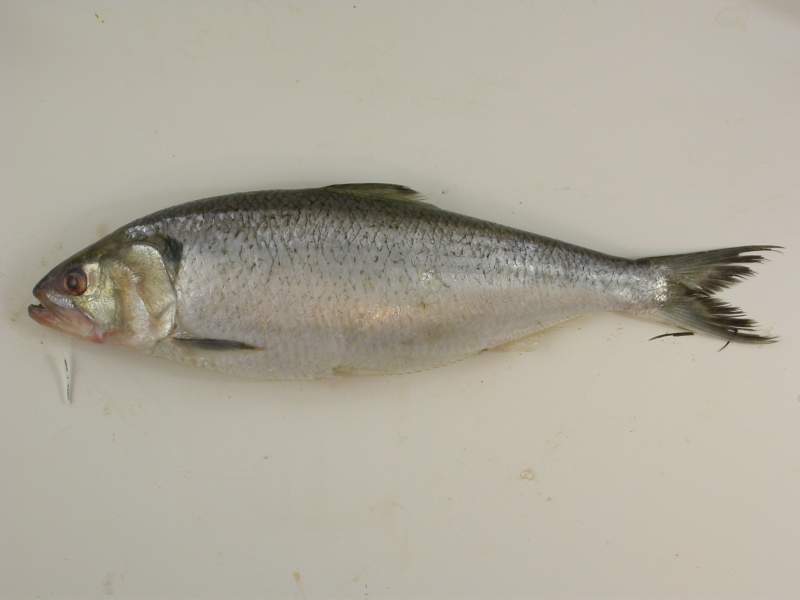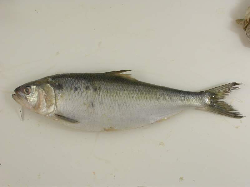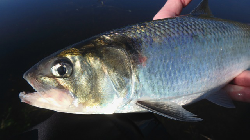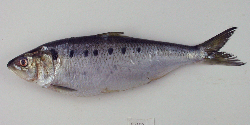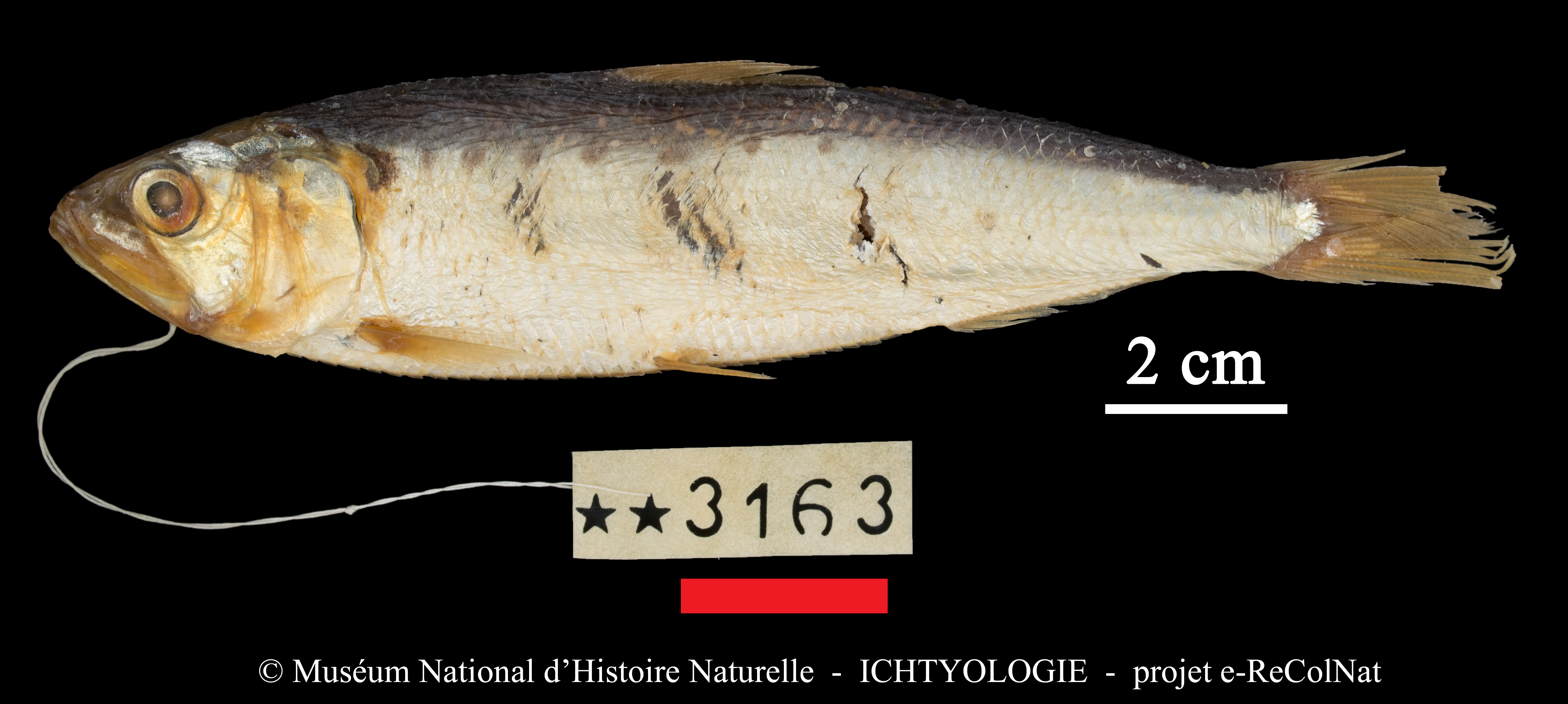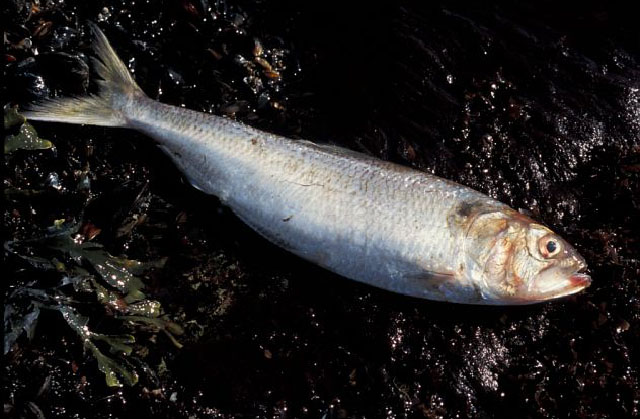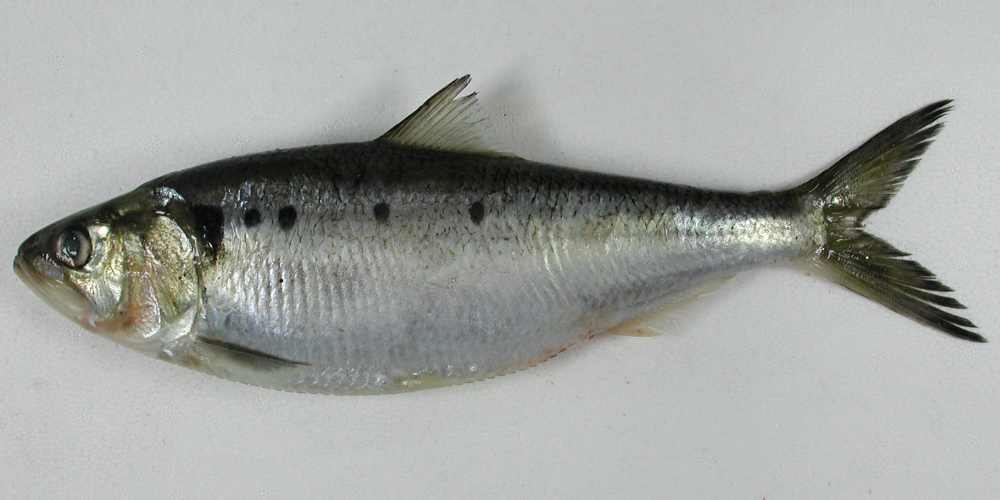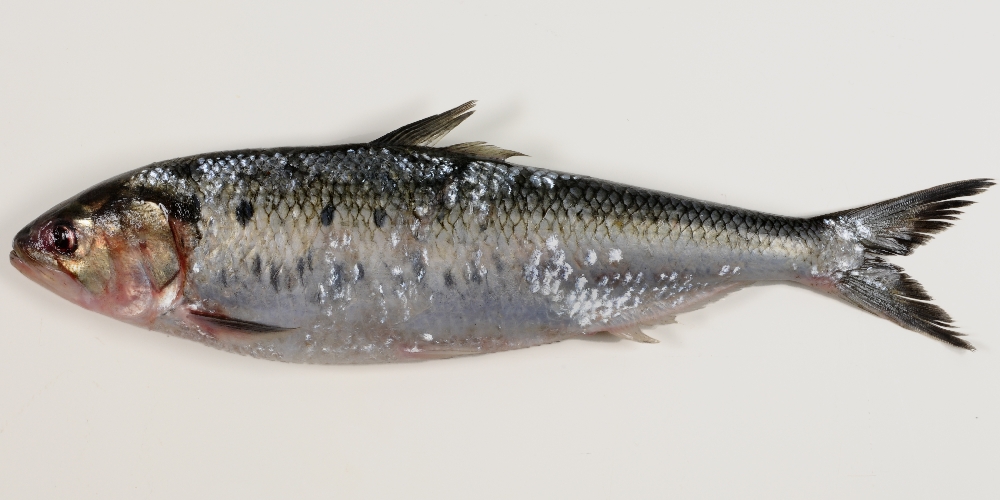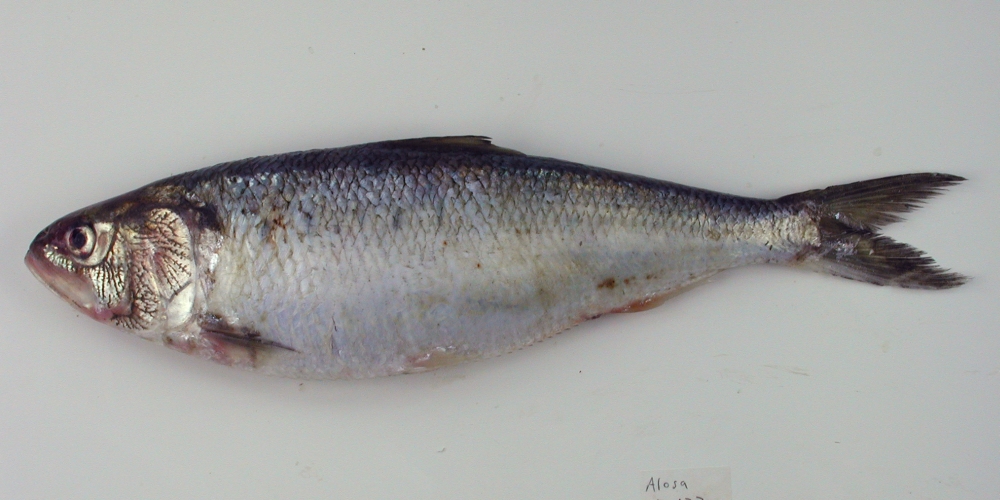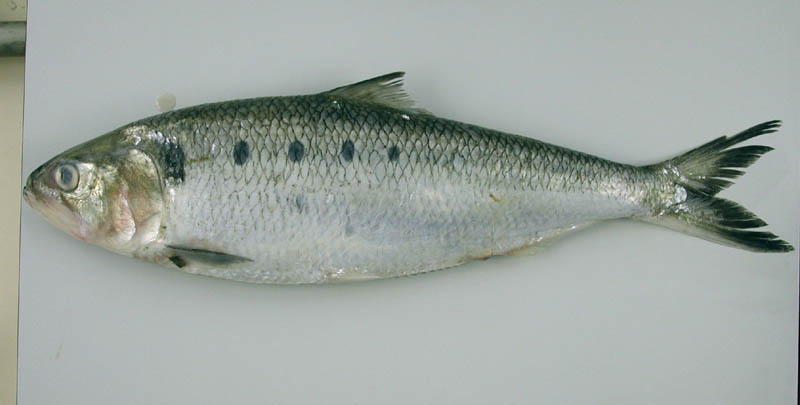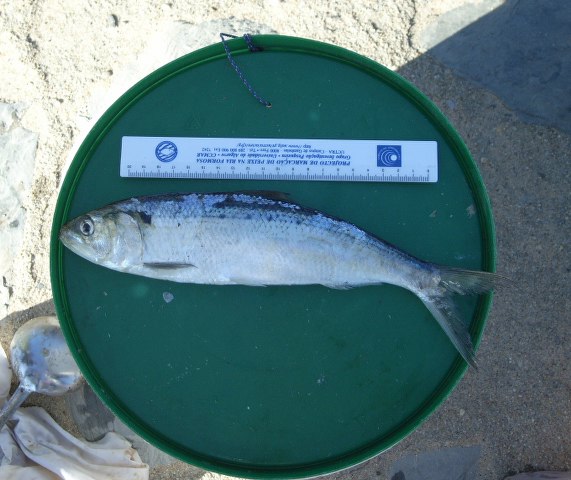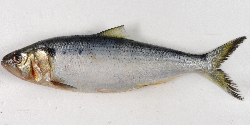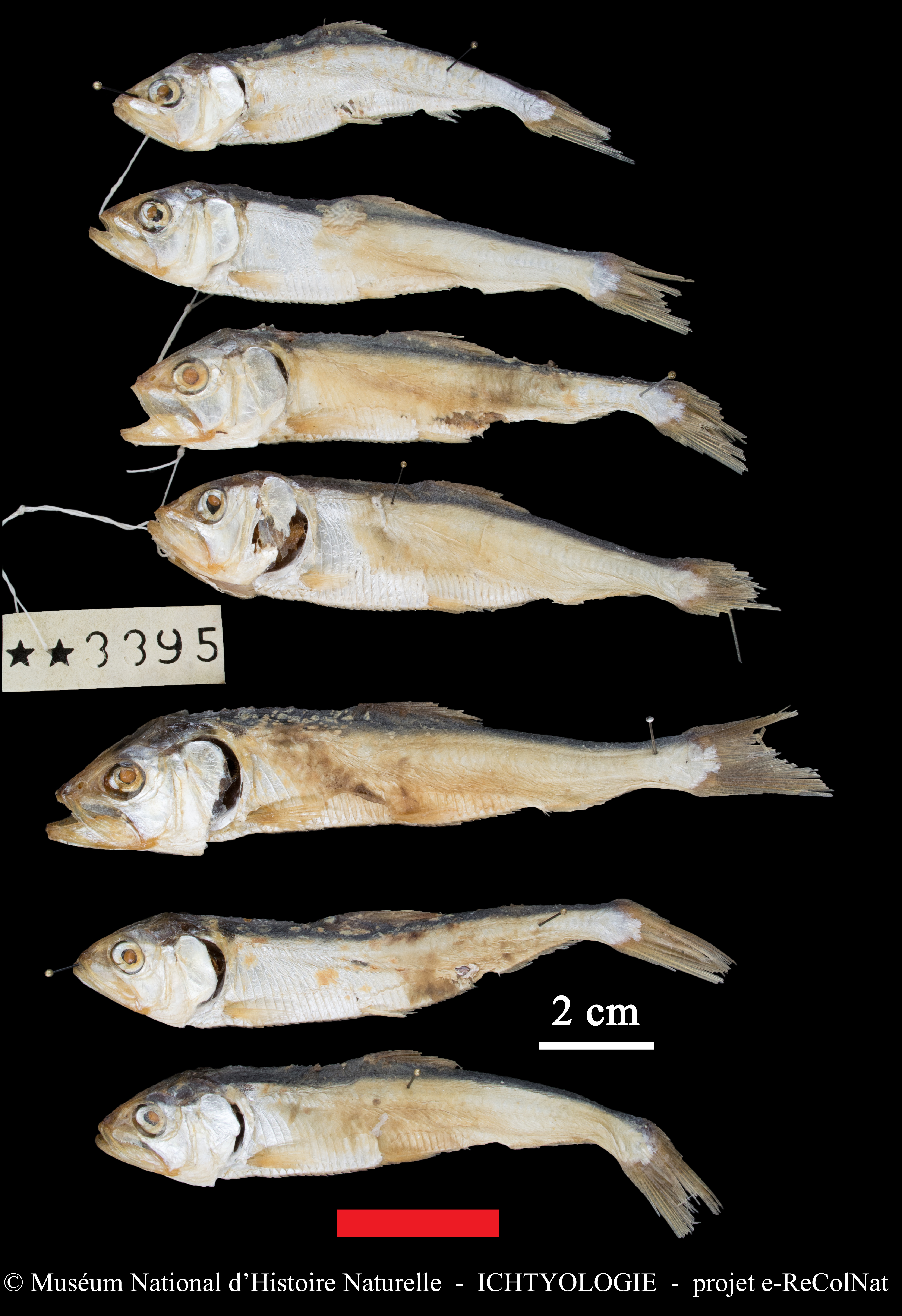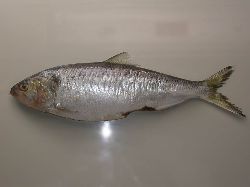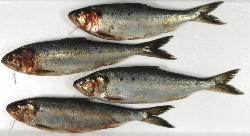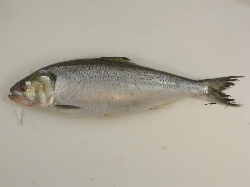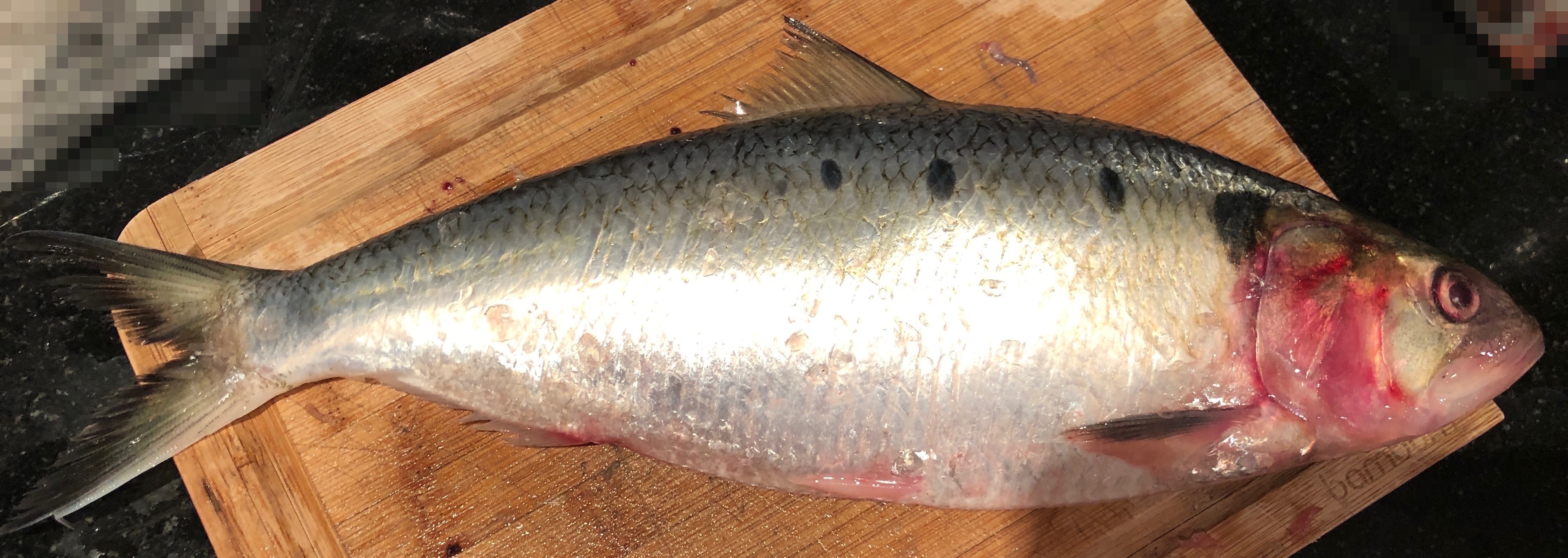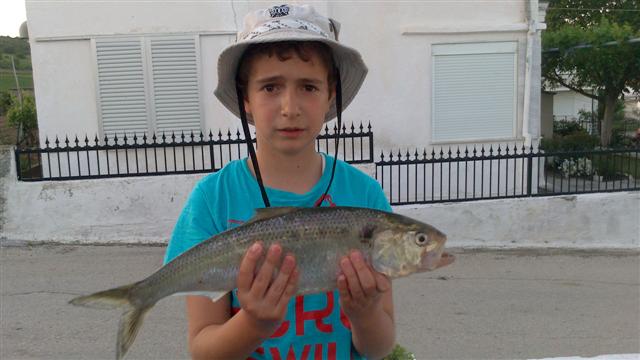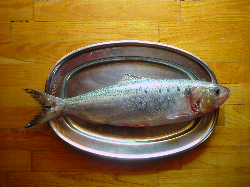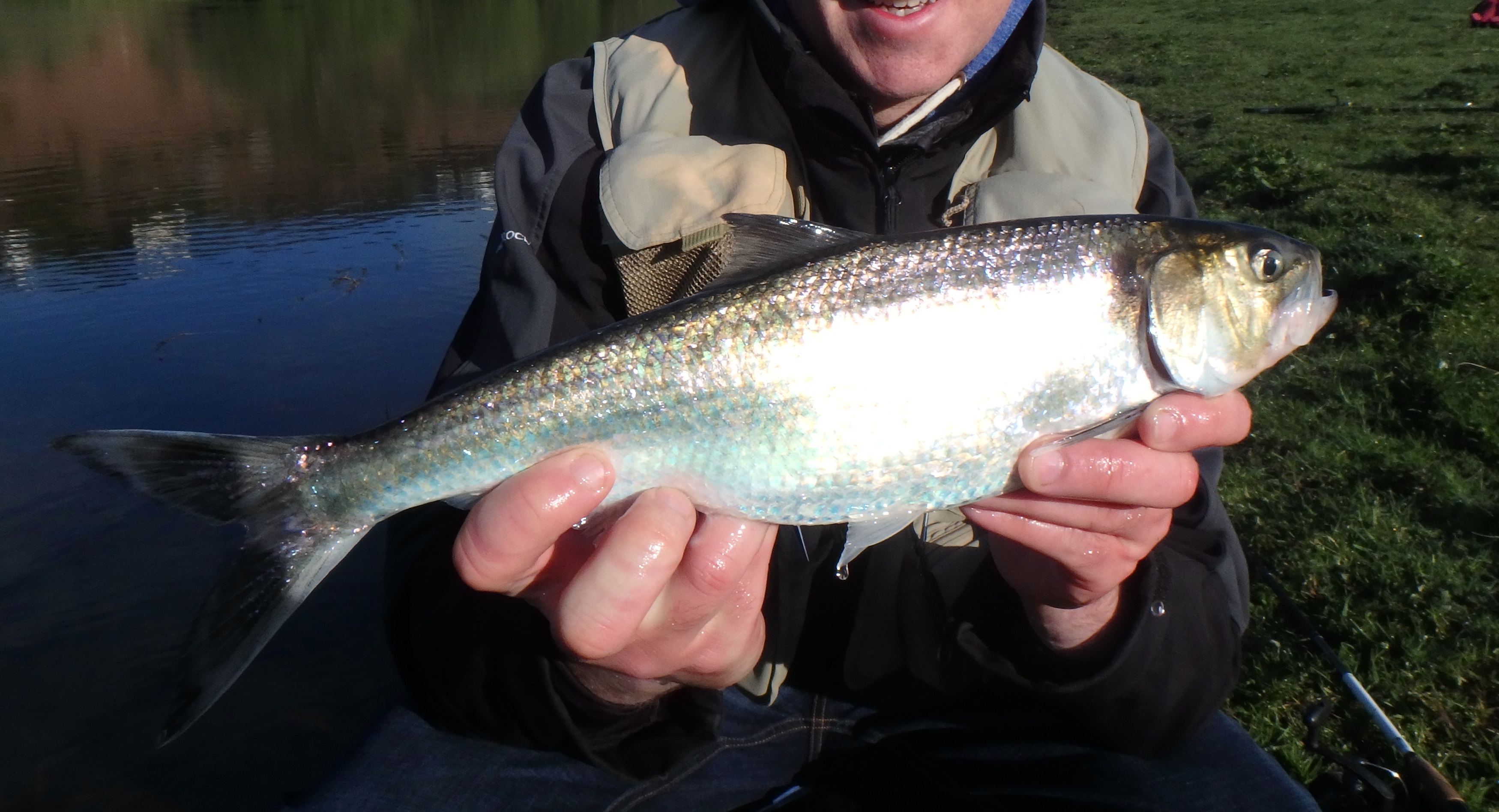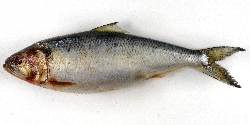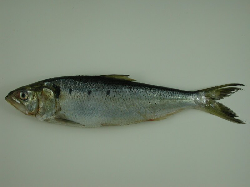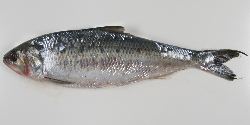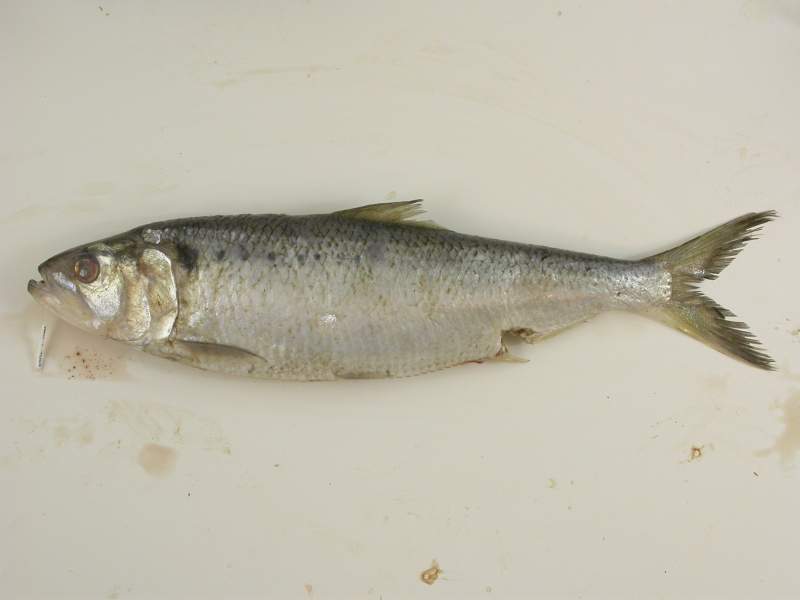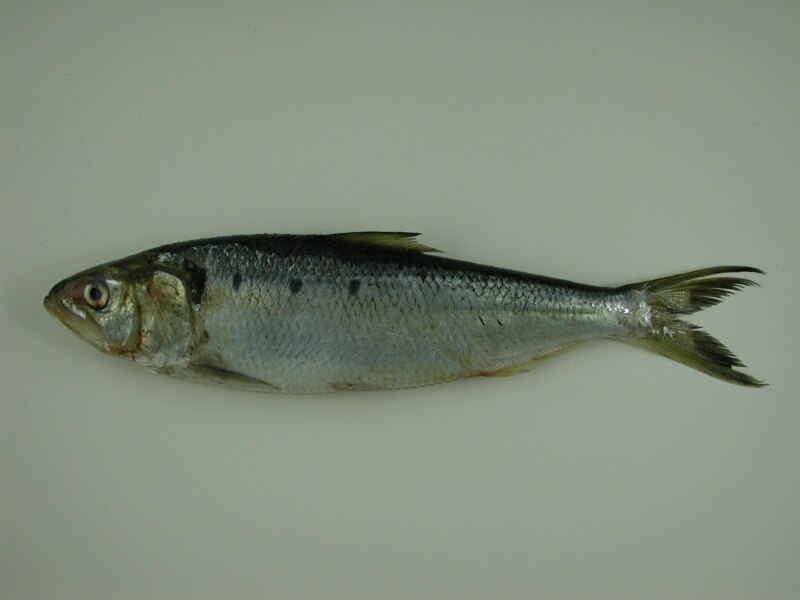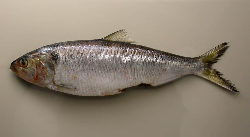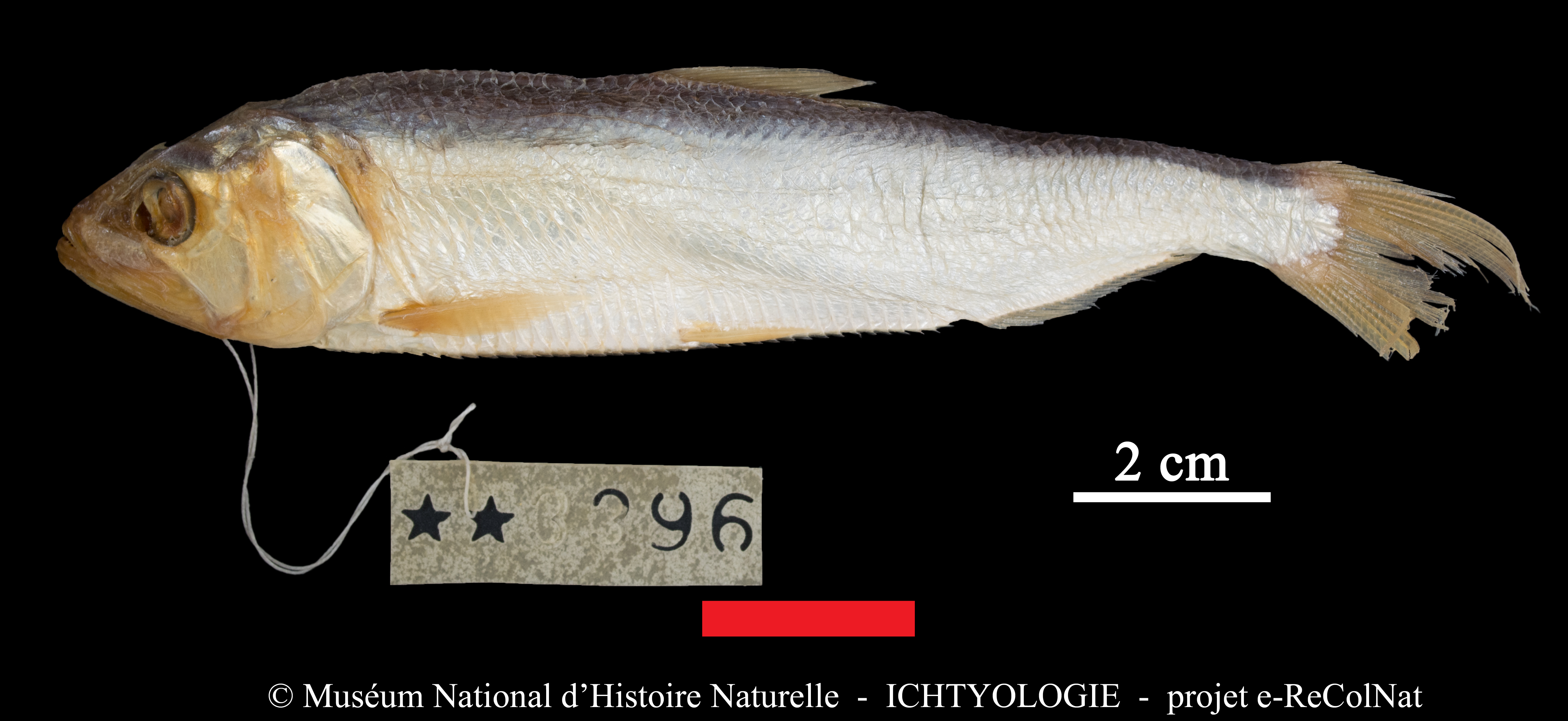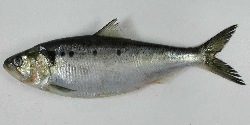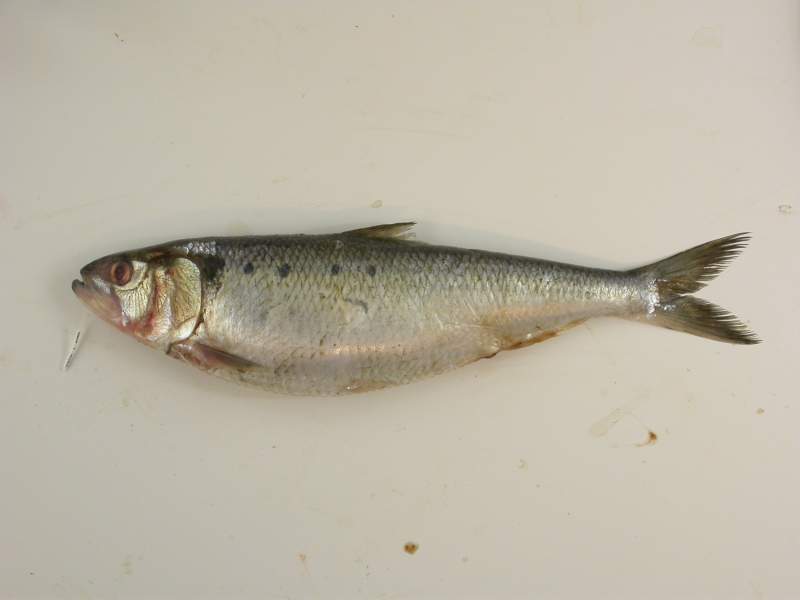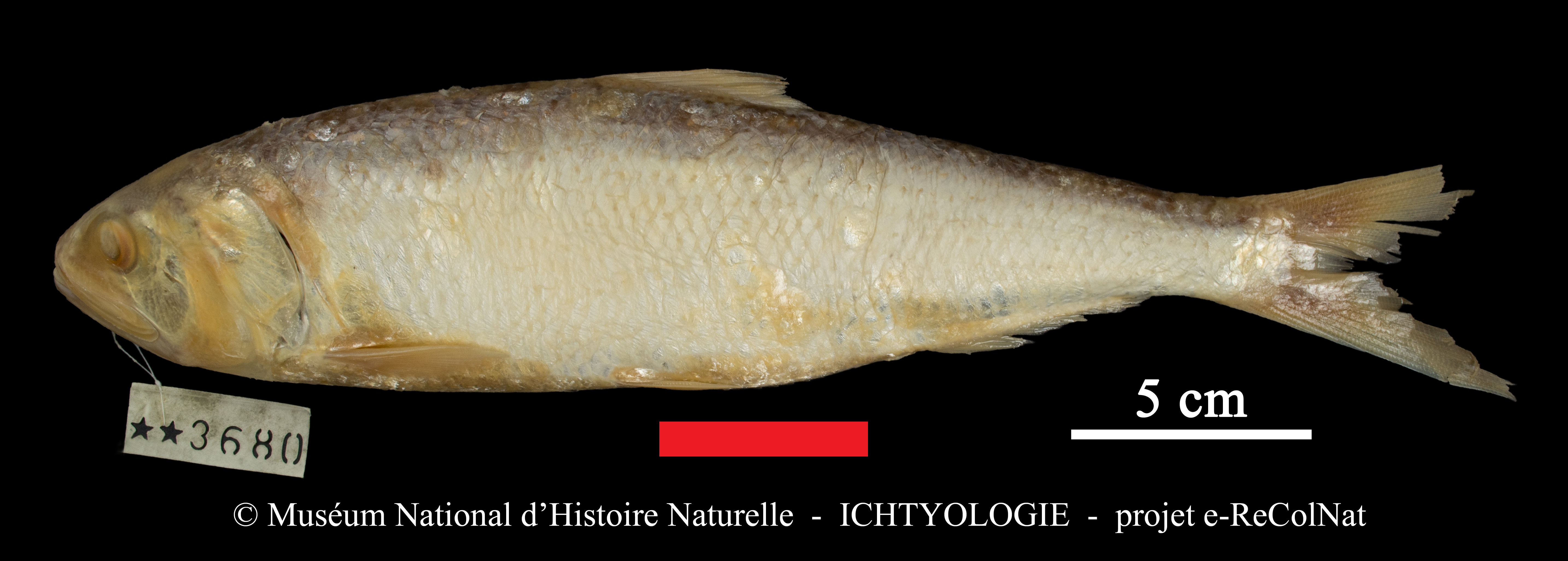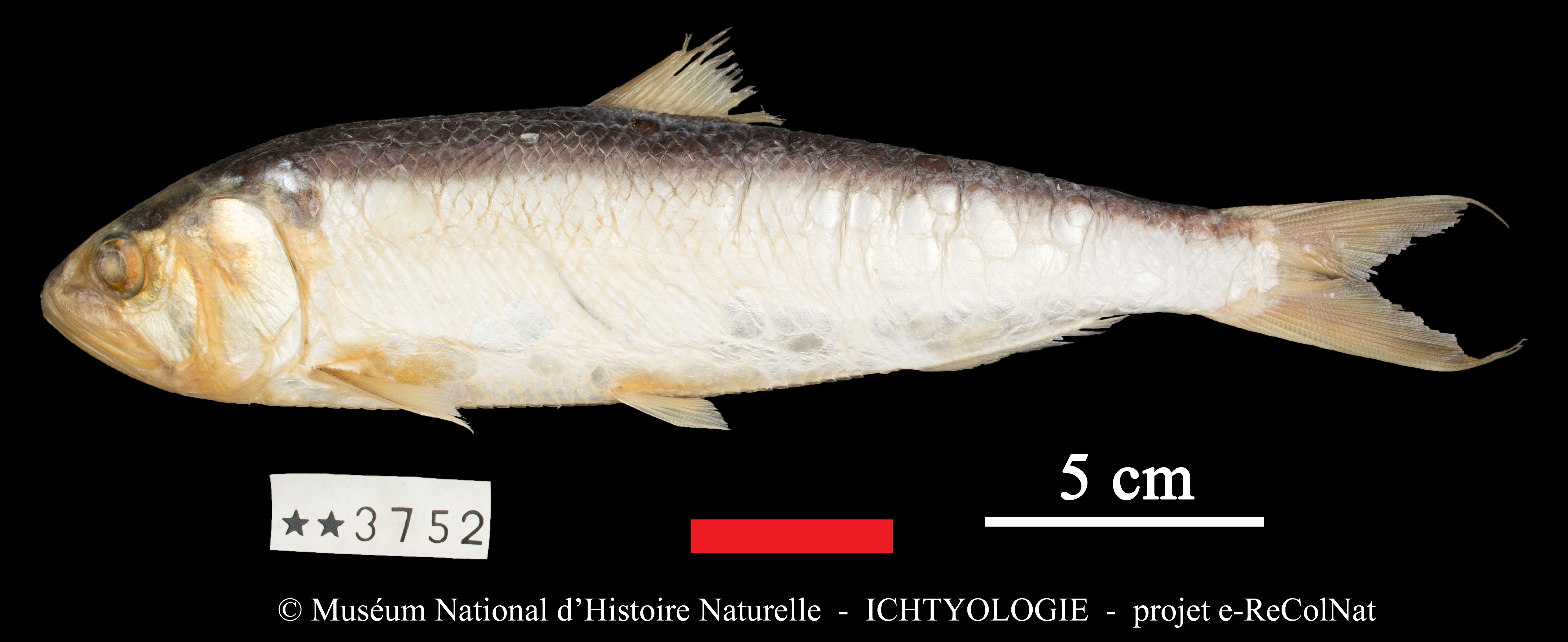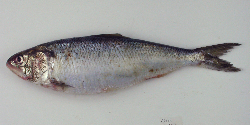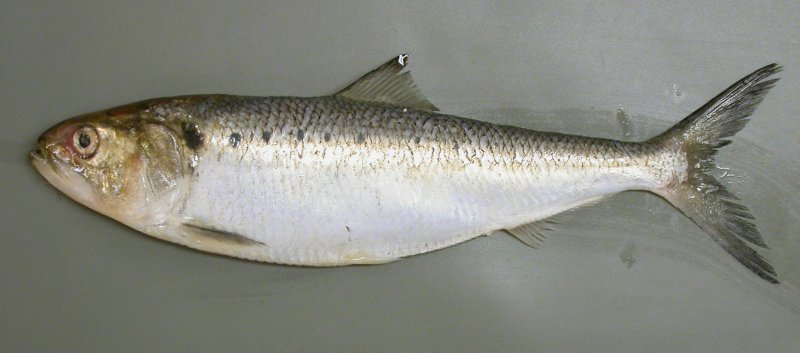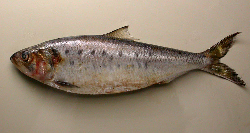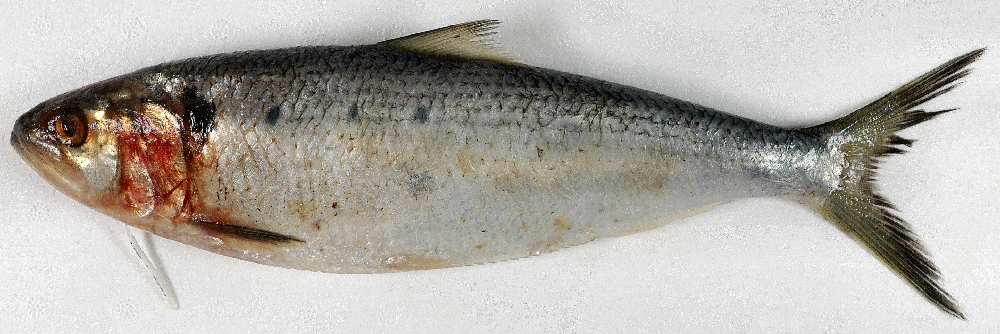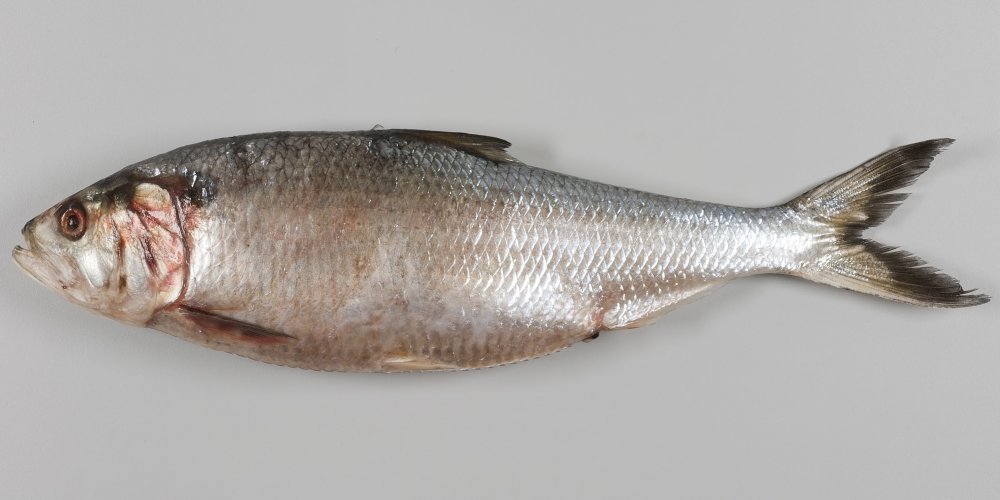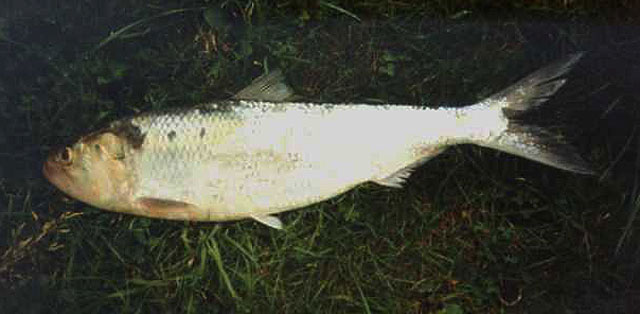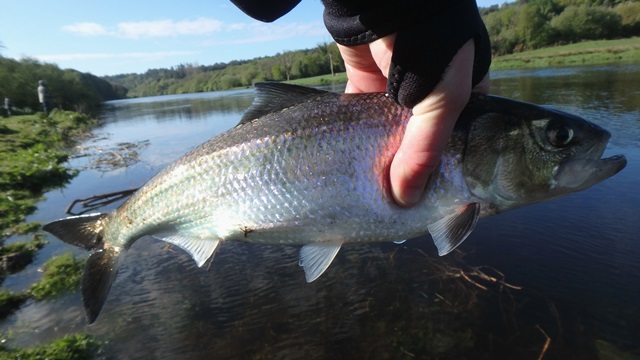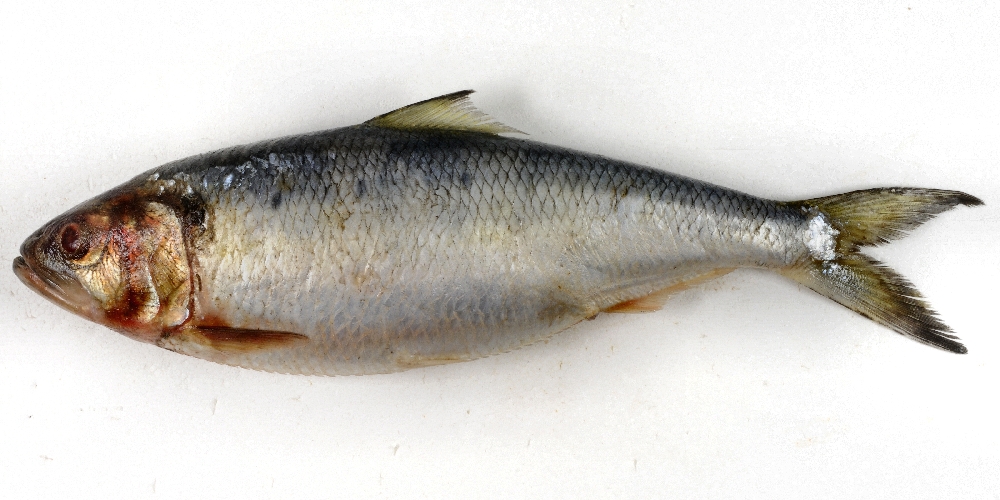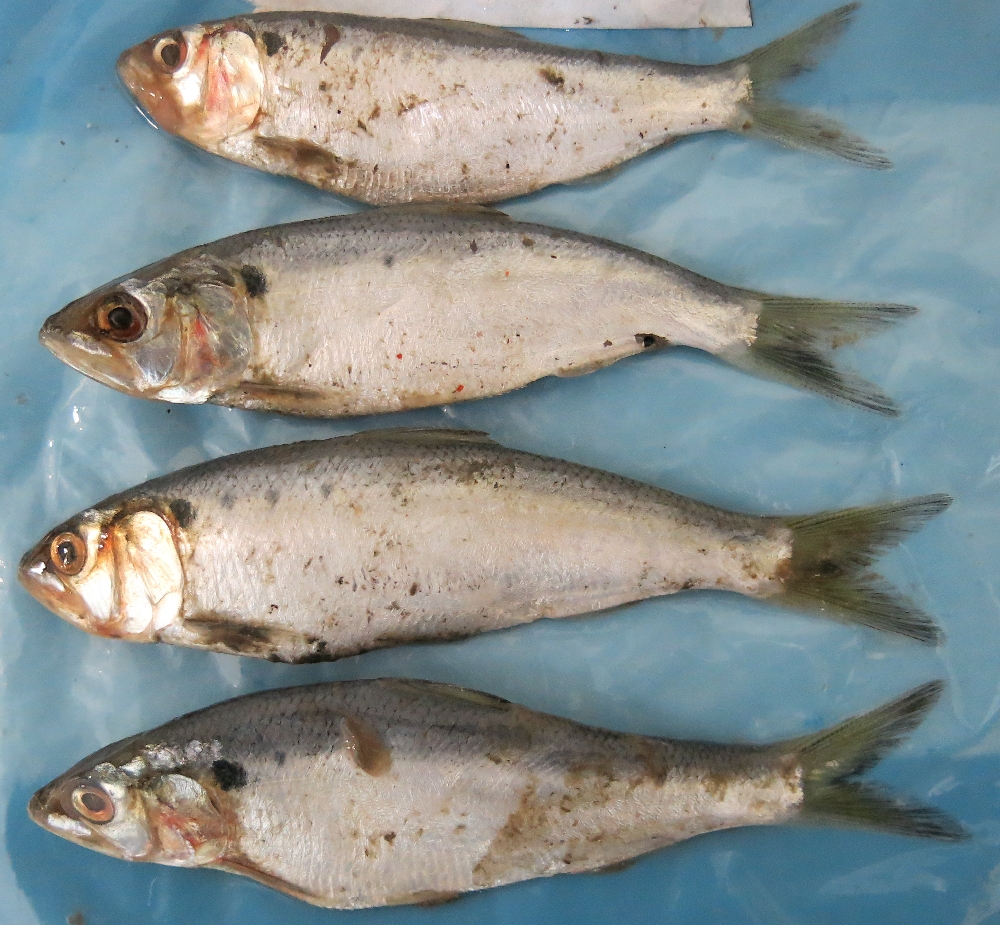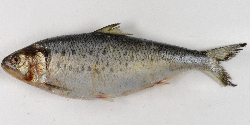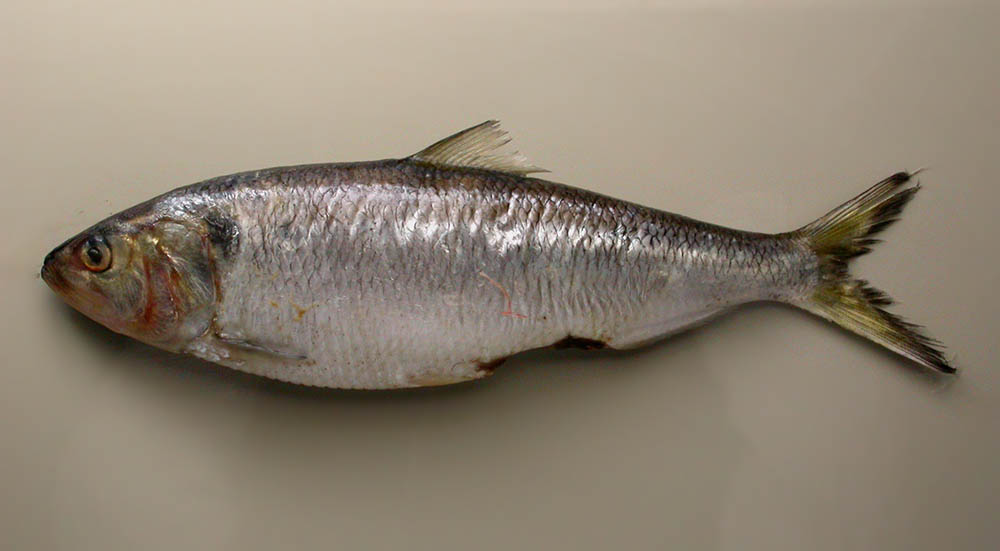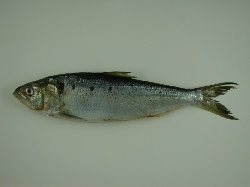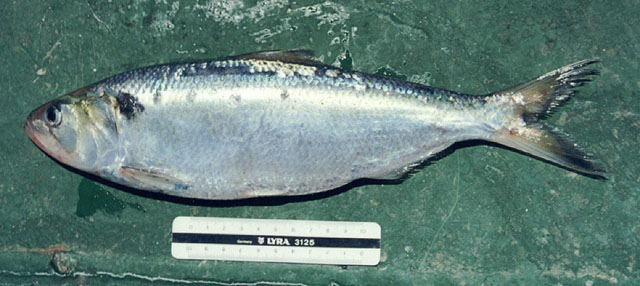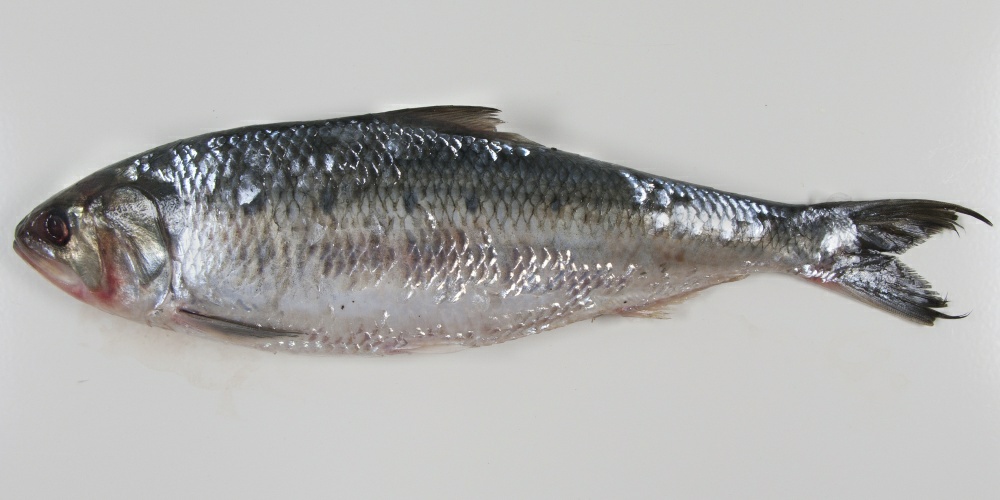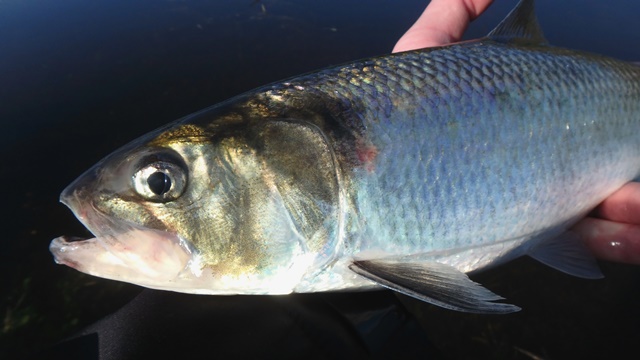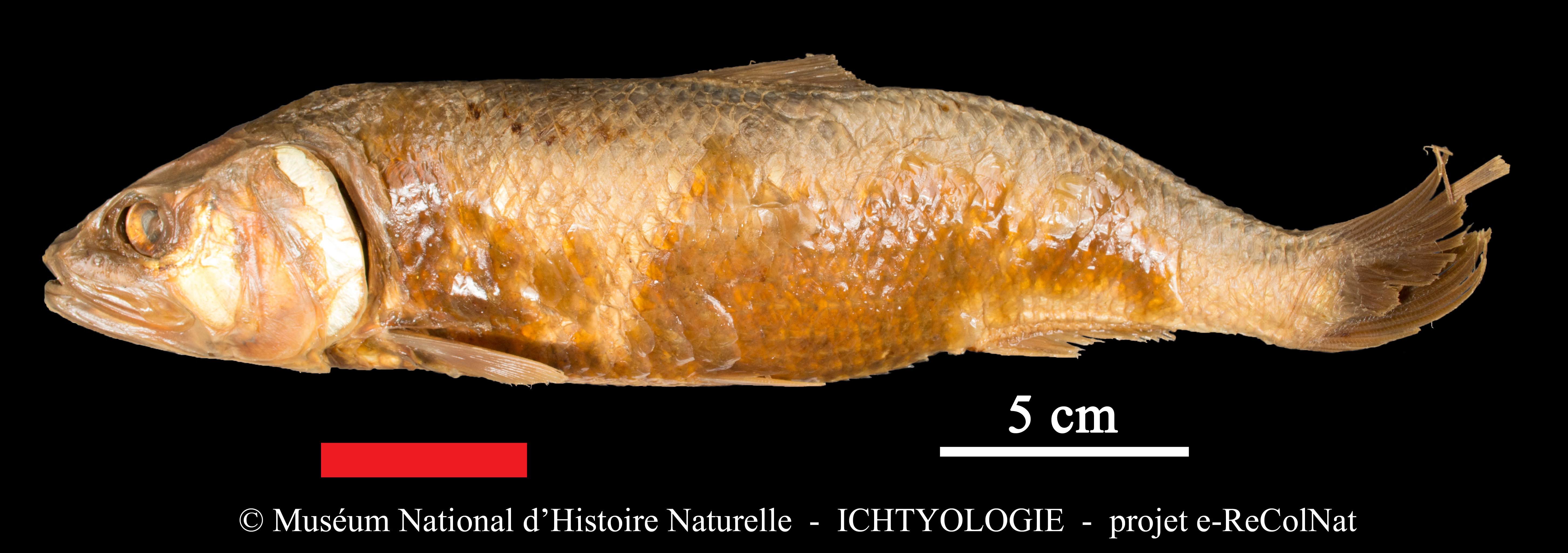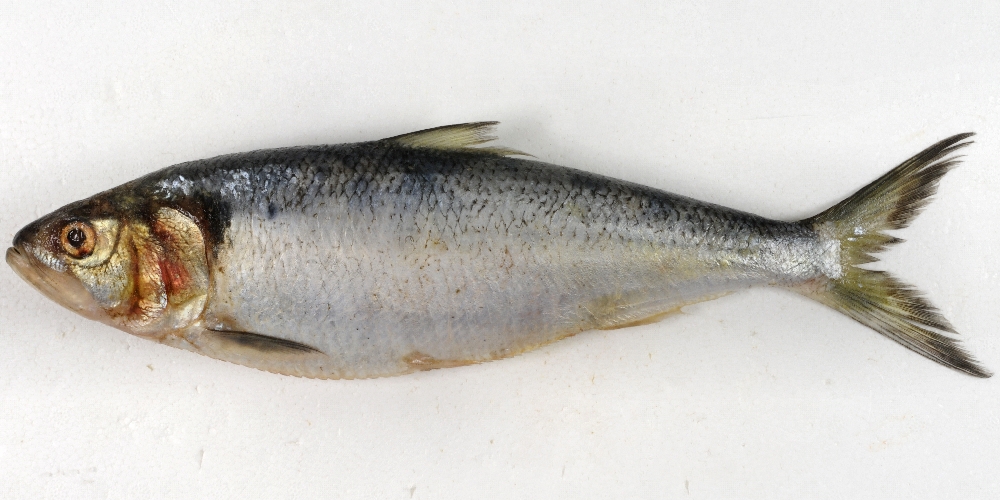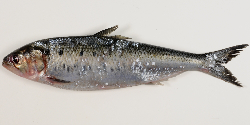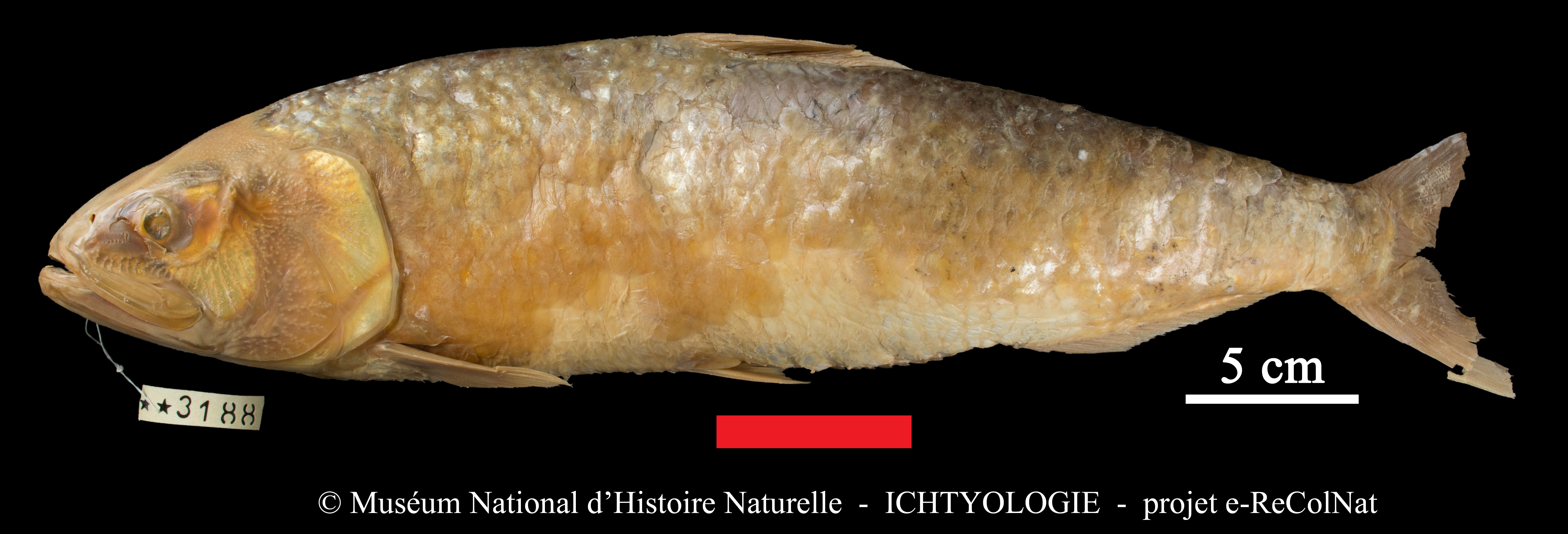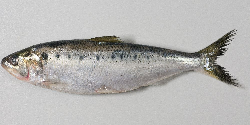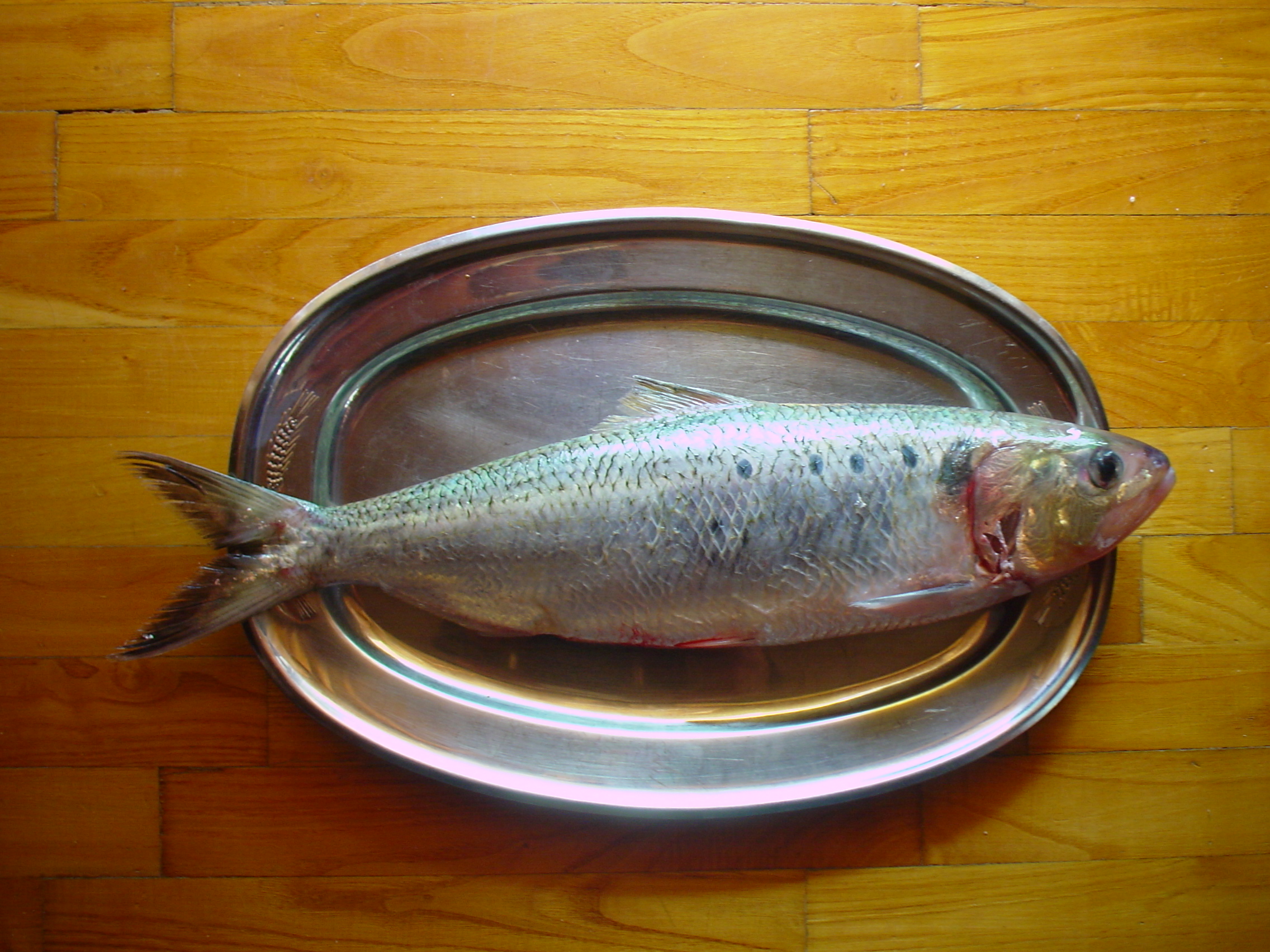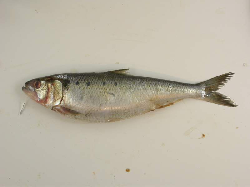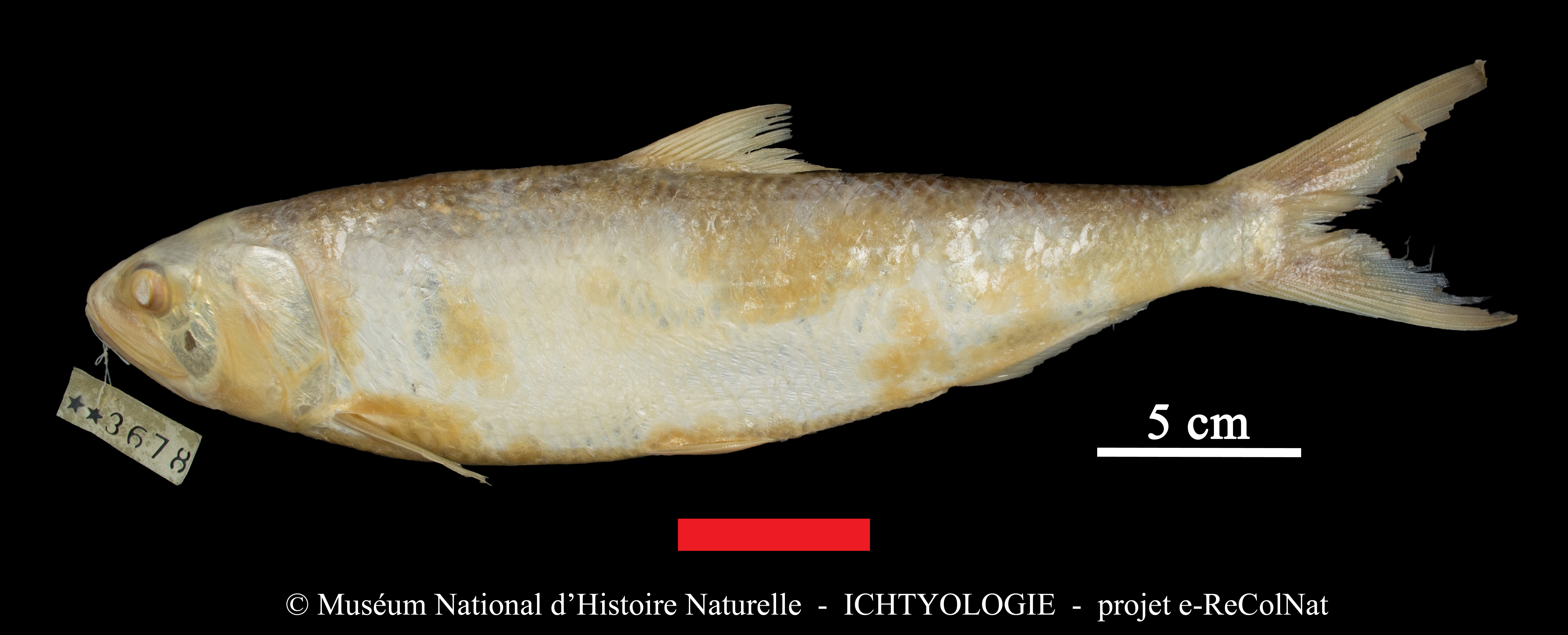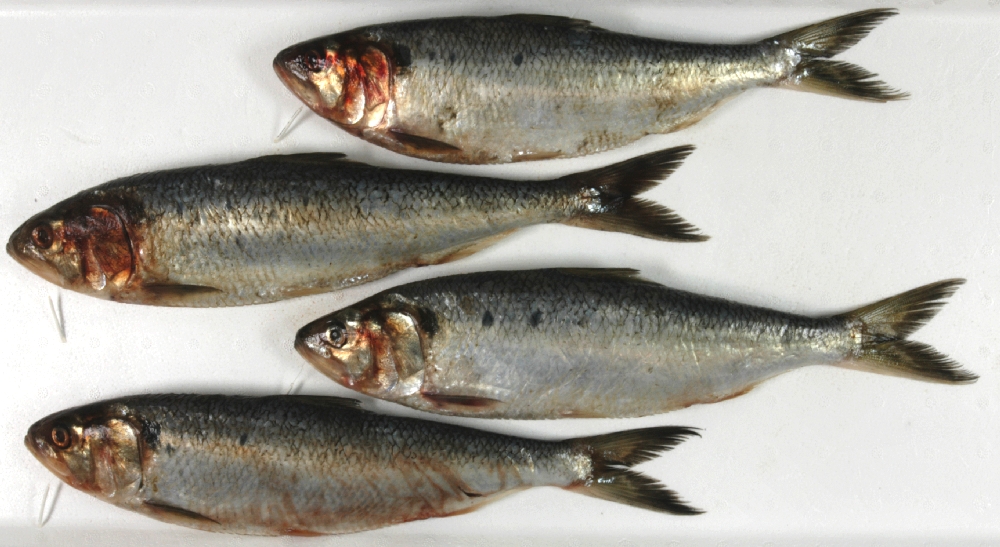Alosa fallax (Lacepède, 1803)
Description
Dorsal spines (total): 0; Dorsal soft rays (total): 16 - 22; Anal spines: 0; Anal soft rays: 19 - 26; Vertebrae: 49 - 59. Diagnosis: Body somewhat compressed, moderately deep with depth at pectoral fin less than head length, scutes apparent along belly (Ref. 188). Upper jaw notched, lower jaw fitting into it; no teeth on palatine and vomer; gillrakers fairly short and stout, total 30 to 80, shorter than gill filaments (Ref. 188, 59043). Usually a series of 4-8 black blotches behind gill opening, but sometimes a single blotch, the others faint or absent (Ref. 188, 40476, 59043). Alosa fallax resembles Alosa alosa, which has more and longer gillrakers and at most only 3 dark spots on flank (Ref. 188).
Common Names
Taxonomic Hierarchy
Kingdom: Animalia
Phylum: Chordata
Class: Teleostei
Order: Clupeiformes
Family: Alosidae
Genus: Alosa
Species: Alosa fallax (Lacepède, 1803)
Climate Zone
Location
Biology
Amphihaline species (Ref. 51442), schooling and strongly migratory, but apparently not penetrating far up rivers (Ref. 188, 6683). Adults are usually found in open waters along the coast (Refs. 59043, 89486); juveniles are usually found along estuaries and near the shore (Ref. 59043), possibly making vertical diurnal movements synchronized with the tides; they remain in estuaries for over one year (Ref. 89630). Several landlocked (lake) non-migratory populations exist (Ref. 10541). Mostly anadromous, entering river mouths in March (Italy) or early June (northenr European rivers) to spawn in or above the tidal reaches; adults probably return to sea not long after spawning (Ref. 188, 6683). Eggs are demersal and widely scattered among sand or gravel on river bed (Ref. 118, 6683). Ichthyophagous, feeds on small fishes and crustaceans, the young taking the fry of herrings, sprats and gobies (Ref. 188, 51442). Females grow faster and are always larger than males of the same age (Ref. 10541). Very locally distributed due to pollution and impoundment of large rivers throughout Europe and most populations declined during the first decade of the 20th century, but seem to have stabilized at a low level since then (Ref. 59043). It has been suggested that members of the genus Alosa are hearing specialists with the American shad (Alosa sapidissima) having been found to detect and respond to sounds up to at least 180 kHz (Ref. 89631). This may aid in predator avoidance (e.g. cetaceans) (Ref. 89632). Hybridization between this species and the allis shad (Alosa alosa) has been reported from the Rhine (Ref. 89633) as well as rivers in France and Algeria (Ref. 10541). There is some evidence that indicates that shad hybrids may reproduce (Ref. 27567).
Habitat
freshwater
